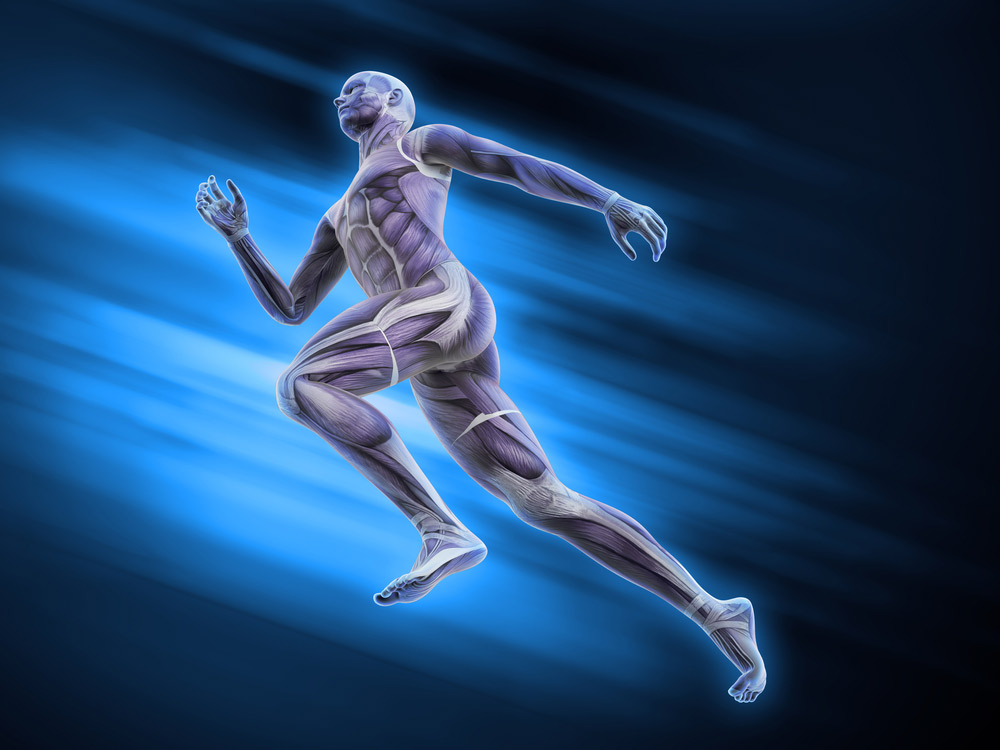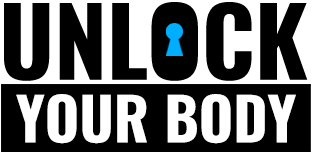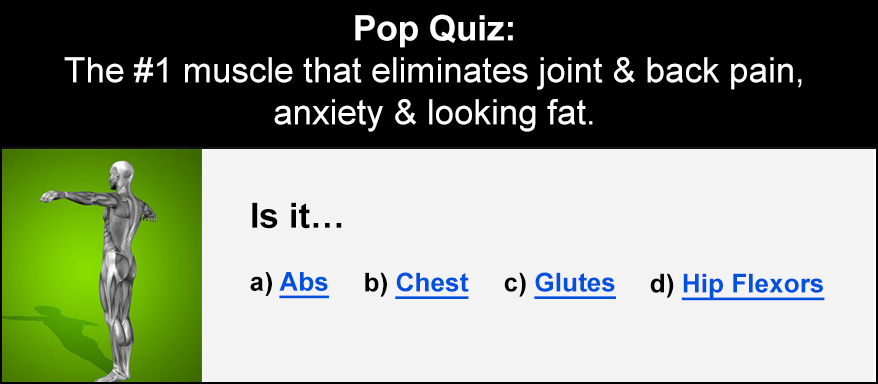
Muscle mass isn’t just for photoshoots and looking like Arnold Schwarzenegger.
Muscle mass is important to maintain a body that has the resilience and longevity to keep you happy, healthy, and active for longer.
However, as we age, muscle mass wastes away and slowly changes how your body works. This is a process called sarcopenia, or age-related muscle-loss. It’s a significant problem and today we’re going to talk about what you can do to maintain lean muscle mass as you age.
Read on if you want to live your best life for longer.
Sarcopenia: The Risks and Health Implications
The risks of sarcopenia are varied – it’s a problem for more than just how you look or how strong you are.
Obviously, however, strength is one of the most important changes you’re going to notice when aging. The loss of muscle mass reduces mobility, makes all movement feel more difficult, and is associated with the onset of movement limitations.
Studies tell us that standing up while struggling with sarcopenia is roughly as difficult as standing up from one leg right now. Try it and you’ll realise just how much of a challenge you’re in for.
Strength also affects the resilience of muscles and their overall tensile health. If you’re not using them and keeping them strong through all muscle-lengths, you’re opening yourself up to increased risk of muscle pulls, strains, and tears.
One key example is muscle loss in the back (the multifidus specifically), which is closely related to lower back pain (LBP). Since debilitating lower back pain affects 80% of people (1), losses of muscle and strength are a real problem for postural health and pain-relief!
Muscles as Shock-Absorbers: Fall Risks
Muscles are also key to the process of absorbing force/shock when moving. If you’re trying to stay healthy then not falling over is a good habit to be in!
The loss of muscle mass associated with sarcopenia increases two key risks: (2)
- Muscle helps control movement, which means muscle loss produces equal levels of motor control loss, increasing fall risk.
- Muscle around a joint protect it from significant injury during falls, so that if you fall, less muscular joints are more at risk
These combine to mean you’re more likely to fall, and more likely to hurt yourself when you fall, when suffering with sarcopenia.
This is one of the key factors in the onset of a cycle of hospitalisation and atrophy that can really ruin the quality of your later years. Falls and fractures are a big deal in elderly populations. Preventing sarcopenia before you fall into this trap is a worthwhile investment of your time and effort!

Hormonal and Metabolic Risks of Muscle Loss
Finally, there are devastating hormonal and metabolic issues associated with muscle loss (3).
These lean tissues make up a significant part of the daily calorie demands of your body. During sarcopenia, the risks of excessive fat accumulation are very high.
We all expect to see ourselves gain a little weight as we age, but this is related to the amount of muscle you keep. There’s no shame in getting a little softer and chubbier as you get older – your body is going to change hormonally – but maintaining muscle supports a healthier metabolism and long-term weight management.
This is a problem for associated problems like joint health, cardiovascular risks, and hormonal decline – all of which are associated with both sarcopenia and fat gain.
Combatting these issues on two fronts – by reducing muscle loss and fat gain – work together in a big way. Many of the key ways of reducing the onset of sarcopenia also improve other key health markers, which we’re going to discuss below.
What you should be seeing is that sarcopenia is very bad for your health. However, it’s also totally within your control if it hasn’t set in yet – you’ve got control over the key risk factors and variables that make sarcopenia a problem!
Fortunately, we’re going to take you on a simple, easy guide to reducing sarcopenia risk. This starts at any age, but it’s more and more important as years go by and you get closer to the real risks!
Fighting Back: What Can You Do To Stay Strong?
Get Strong
Fighting sarcopenia begins with building muscle mass in the first place (4).
You don’t need to dedicate yourself to looking like bodybuilder, but every extra pound of muscle is going to mean a slower decline as you age. For the vast majority of your life (especially if you’re new to strength training), your ability to gain muscle will out-pace your body’s loss in muscular potential.
Getting stronger also means better muscular control and improves joint, connective tissue, and bone health. There are so many benefits to strength training that include – but go beyond – bigger muscles.
We recommend a varied and progressive system of exercise (5) that involves lots of single-leg movements, for example, and lots of core/glute work. These all support postural health and improve long-term movement independence.
Strength training can take as little as 3 sessions a week at 30-60 minutes each and will provide a foundation for better long-term health and wellbeing (6). It’s a way of improving your confidence and appearance, as well as boosting hormonal and structural health! There are no down-sides!
Nutrition
What you eat informs what your body does. You are what you eat, and to prevent sarcopenia you need to be eating nutrient-dense foods.
There are a few key areas of your diet that you need to focus on: good protein intake, addressing common nutrient deficiencies, and getting plenty of essential muscle-supporting minerals.
Protein
The starting point for preventing muscle loss is to increase the protein in your diet.
Muscles are made up of protein and contain around 95% of your body’s total protein content. Your dietary protein is closely tied to your body’s muscle mass levels. This is why it’s the favourite nutrient of athletes and bodybuilders all over the world.
If you’re not getting enough protein, you’re going to start wasting muscle mass to make up the deficit. This is also possible if you’re consistently under-fed on calories. The combination of adequate protein and calories is the #1 nutritional change to support long-term muscle maintenance!
A higher protein intake also supports muscle mass in the first place, helping you get stronger and more muscular. The combination of protein and strength training is the best way of building muscle, reducing muscle loss, and making sure that weight loss is more likely to come from fat-loss.
Protein recommendations for active individuals are around 0.6-1g per pound of bodyweight (7) each day. For example, if you weigh 200lbs, you should be consuming around 120g – 200g of protein per day.

Vitamins B / D
Vitamins B and D are the two most important groups of vitamins for supporting muscle mass(8). They’re also some of the most commonly deficient compounds in the western diet and they are difficult to get in the perfect quantities.
Vitamin B – a group of 12 key nutrients – support energy metabolism. This is important because energy deficiency in key tissues like the brain or muscles can lead to significant decline. These deficiencies tend to show up as degenerative brain disease and sarcopenia, respectively.
These are both significant problems in the senior population, so getting plenty of B vitamins is a great choice. You can get these from a few key vitamin B-rich foods, but also from supplementation, both of which support better muscular and full-body metabolism health.
Vitamin D is also closely tied into hormonal and mental health. Deficiency in this vitamin is the most common nutritional problem with around 75% of Americans under the RDA. This is even more of a problem since the RDA is likely still not as high as optimal intake!
Vitamin D supplementation is often essential, but you can also get this in compounds like cod liver oil, along with vitamin A and omega-3 fats (also great for you).
Supplementation of vitamins B and D – as well as an active dietary intake – are great ways of supporting overall health and wellbeing. They also address some of the key underlying issues with your diet contributing to muscle loss.
Zinc / Mag / Calc / Potassium
Trace minerals play a key role in muscle function and the way that your body treats muscle mass (9). These are just like vitamins for importance, but they’re often given less attention.
There are a few key minerals associated with muscle maintenance, and they’re easily acquired in the diet with a little bit of thought and attention to detail. These include Zinc, Magensium, Calcium, and Potassium.
Zinc is a key mineral for overall metabolism, health, and hormonal regularity. Studies have shown that Zinc deficiency is a key player in precocious puberty in men, for example, where growth is stunted.
Magnesium is a universal mineral that plays over 300 roles in the body and provides support to a wide variety of processes. Deficiency is very common and is a key reason for sub-optimal health in well-developed countries like the U.S.
Calcium is an essential compound in the excitability of muscles and their recovery after workouts. This makes it an essential focus of a good anti-sarcopenia diet. It also supports bone health when combined with vitamin D and reduces the risk of breast cancer around the menopause.
Sleep
Get plenty of sleep!
You might think burning the midnight oil is great for work, but it is taking years of your life across the board. Sleep debt is a huge hormonal and metabolic problem, and if you’re dealing with this deficiency of shut-eye, you’re at risk for more than just sarcopenia (10).
Sleep is the time your body sets aside for maximal hormonal and structural recovery. It’s the rest you need to support muscles, bones, and other tissues. They get used during the day and they’re repaired while you’re sleeping.
If you’re not sleeping properly, testosterone levels become unbalanced which accelerates muscle loss. This also means persistent muscle damage from activity and exercise are heightened and never fully-repaired, which can lead to muscle breakdown.
Overall, sleep is just crucially important for good health. Next time you get a nap or take another hour in bed, remember it’s for your health!

Sarcopenia – age-induced muscle-wasting – is a real problem. However, it’s a real problem that you have control over and can fight back against. Proper nutrition and strength training go a long way towards staying strong and healthy for longer.
Combining effective eating/training with good sleep and a conscious approach to your body will make a huge difference! Sarcopenia overlaps with other mortally-dangerous health changes that come with age, as well, making it a great way of addressing overall health and quality of life.
It doesn’t take much to combat muscle-wasting and it has its own benefits. The time you put in now will come back to you in the years later in life where you’re still mobile, healthy, and active thanks to better muscular health!
References:
(1) https://www.ninds.nih.gov/Disorders/Patient-Caregiver-Education/Fact-Sheets/Low-Back-Pain-Fact-Sheet
(2) https://www.sciencedirect.com/science/article/pii/S0197457214000706
(3) https://www.jci.org/articles/view/114857
(4) https://onlinelibrary.wiley.com/doi/abs/10.1046/j.1532-5415.2002.50216.x
(5) https://europepmc.org/abstract/med/23575207
(6) https://www.sciencedirect.com/science/article/pii/S0002934310009277
(7) https://examine.com/nutrition/how-much-protein-do-you-need/
(8) https://journals.sagepub.com/doi/abs/10.1177/147323000703500301
(9) https://journals.sagepub.com/doi/abs/10.1177/147323000703500301
(10) https://www.sciencedirect.com/science/article/pii/S1568163715300052







